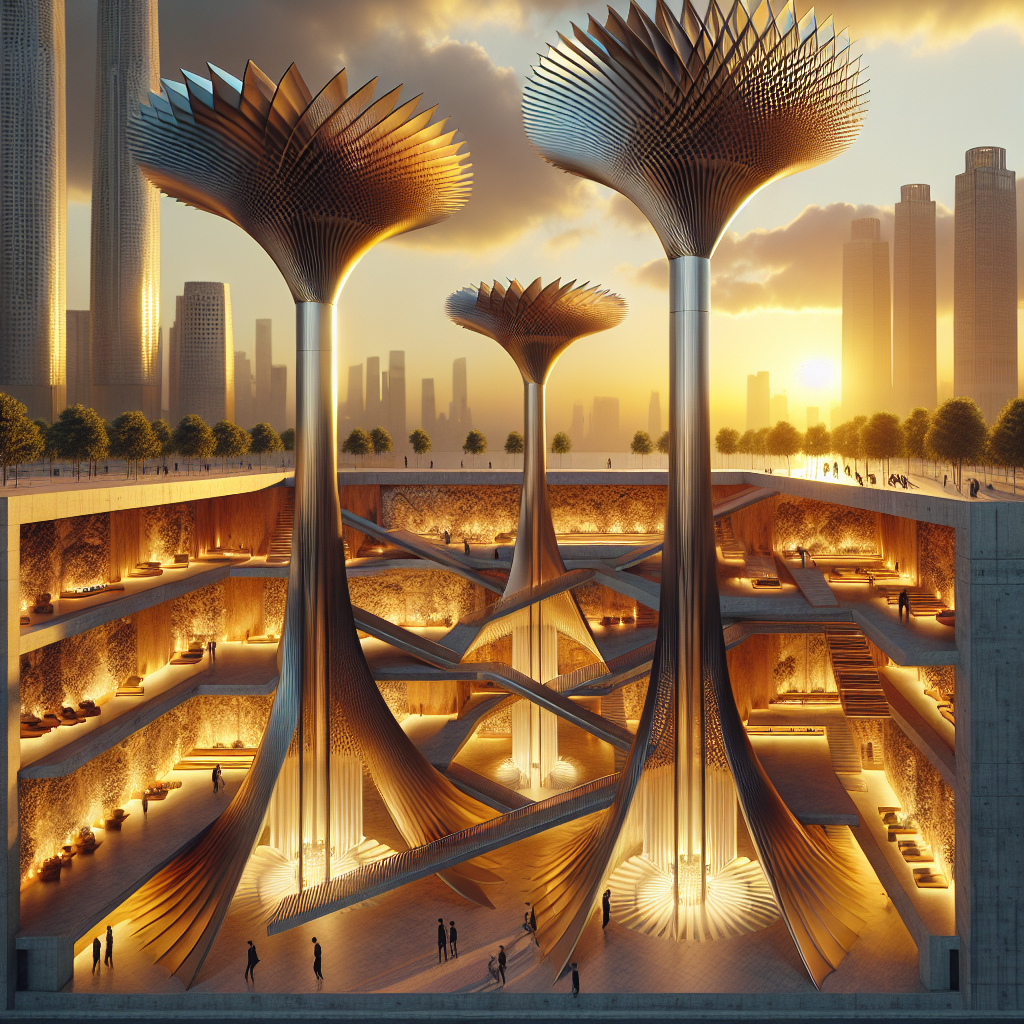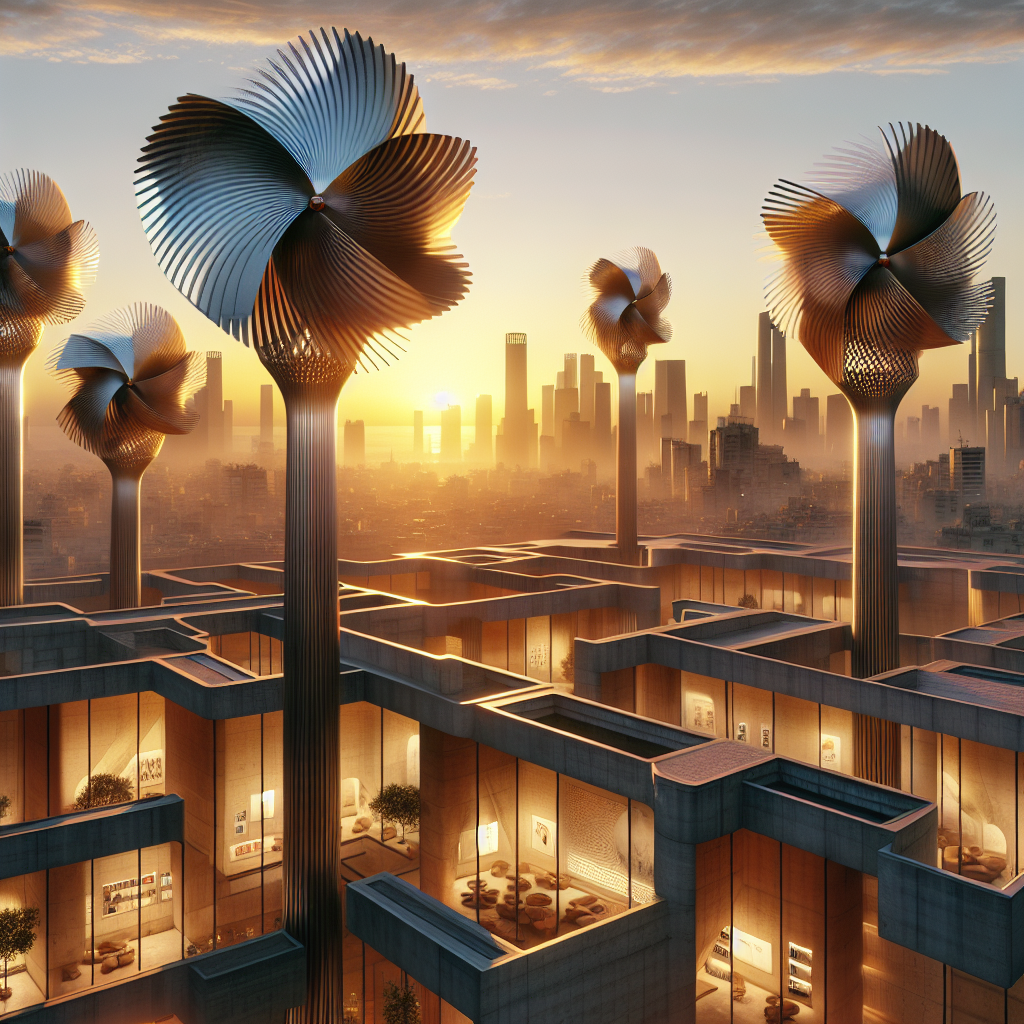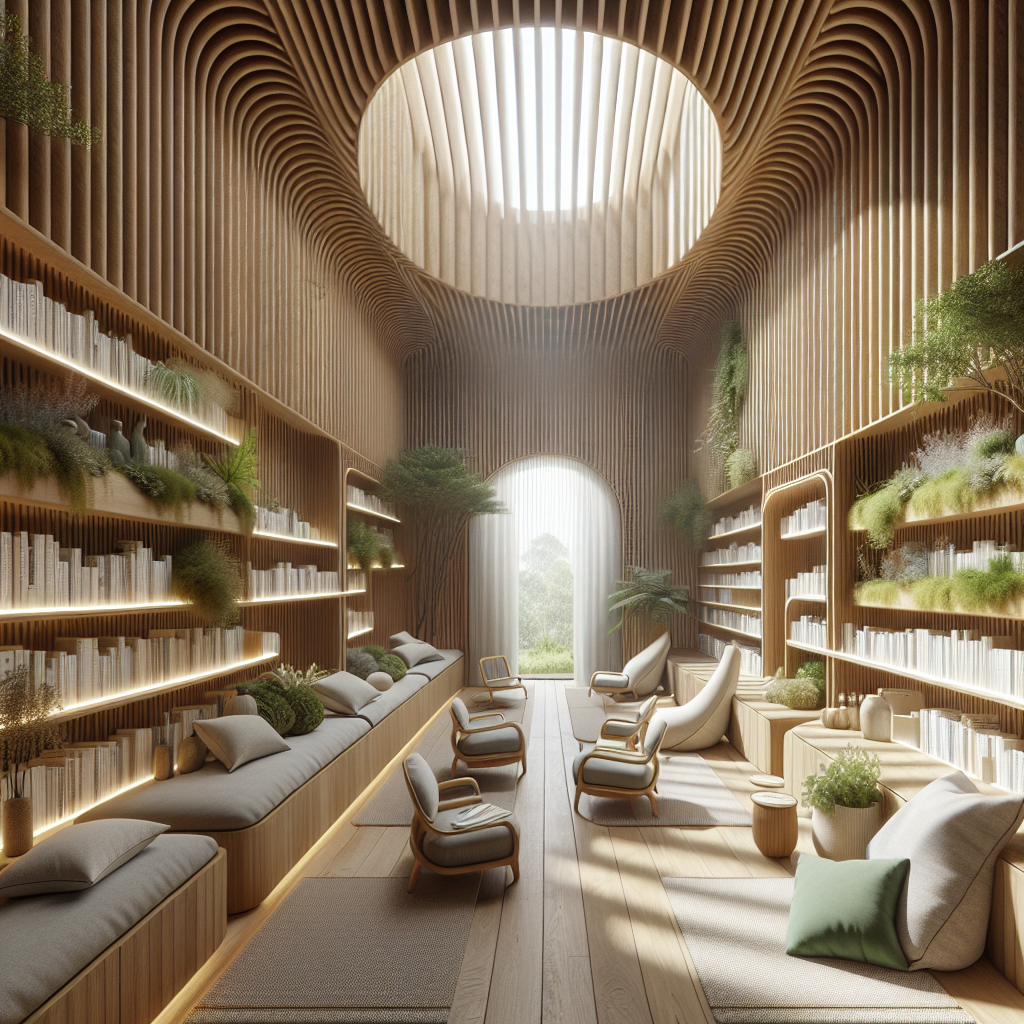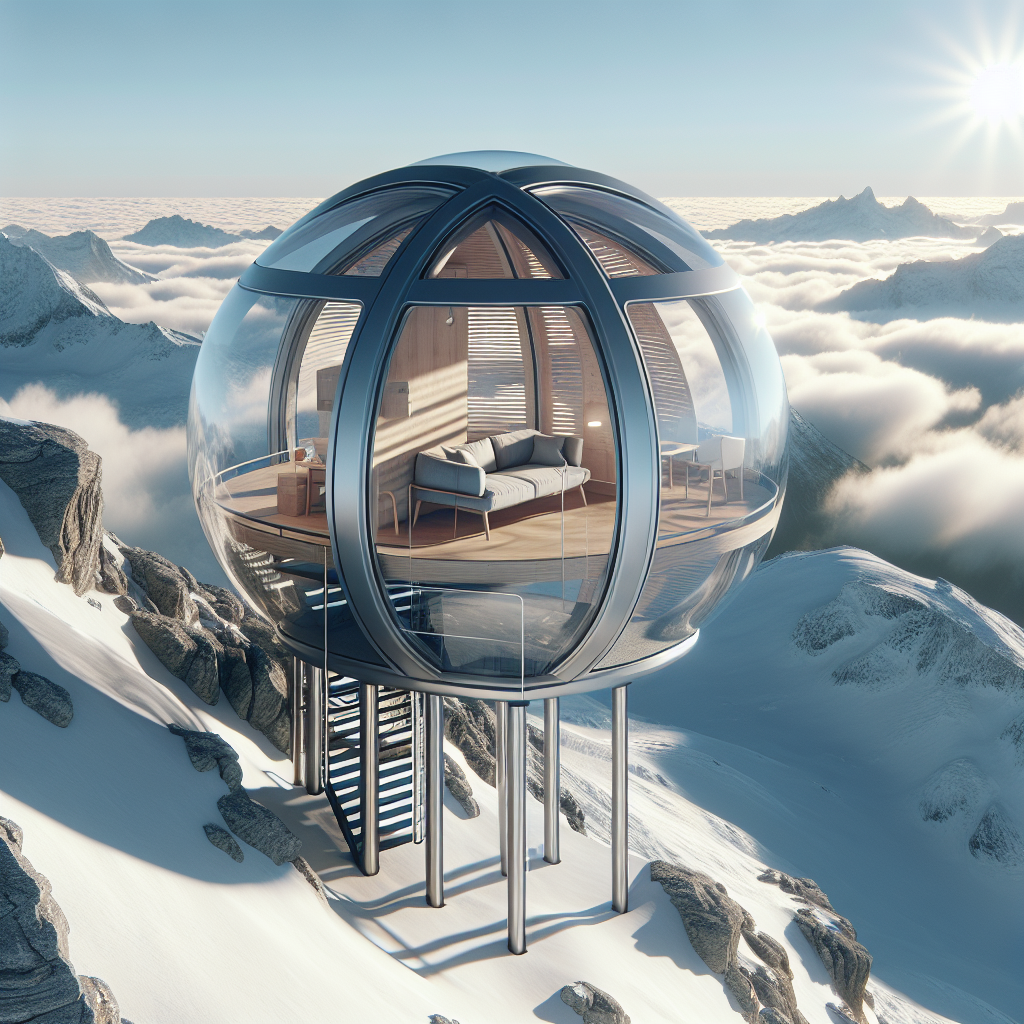Kinetic wind-catcher spires: channeling breezes to underground rooms

Kinetic Wind-Catcher Spires: Channeling Breezes to Underground Rooms
Across the world’s most forward-thinking architectural landscapes, a quiet revolution is taking shape above the rooftops—sleek, sculptural kinetic wind-catcher spires that pirouette with the breeze, channeling air deep into subterranean spaces. These dynamic structures, inspired by ancient desert ingenuity and refined through computational design, are redefining how we think about ventilation, energy efficiency, and the sensory experience of architecture. In an era increasingly defined by sustainability and sensory intelligence, the wind-catcher spire is both a poetic and pragmatic response to the climate crisis.
The Ancestry of Air: From Persian Badgirs to Parametric Spires
The idea of harnessing wind to cool and ventilate interiors is not new. The windcatcher, or badgir, has been a hallmark of Persian and Middle Eastern architecture for over a millennium. These tall, slender towers—often seen rising from the adobe skylines of Yazd or Dubai’s Bastakiya Quarter—captured passing breezes and funneled them into homes, cooling the air through convection and evaporation. In essence, they were early examples of passive climate control.
Today’s architects are reinterpreting this vernacular wisdom through a contemporary lens. By integrating kinetic mechanisms—rotating fins, pivoting louvers, and aerodynamic vanes—designers are transforming static towers into responsive, sculptural systems. These kinetic wind-catcher spires adjust in real time to changing wind directions, optimizing airflow to underground rooms, galleries, or even subterranean gardens. The result is a fusion of ancient environmental intelligence and modern engineering precision.
Engineering the Invisible: How Kinetic Wind-Catchers Work
At their core, kinetic wind-catcher spires operate on the principles of fluid dynamics and thermal stratification. As wind flows across the spire’s surface, it is guided through a network of ducts and vents that descend into the building’s lower levels. The air pressure differential between the tower’s openings and the subterranean chambers drives a natural circulation system, refreshing the air without mechanical fans or compressors.
In advanced iterations, the spires are equipped with micro-sensors that monitor temperature, humidity, and wind velocity. These sensors feed data into a responsive control system that modulates the spire’s orientation and aperture size. The result is a living architecture—one that breathes, shifts, and self-regulates. The kinetic motion itself becomes an aesthetic gesture: slender metallic fins glinting in the sun, rotating with hypnotic grace like modern-day weather vanes.
Architectural studios such as Foster + Partners and Grimshaw have explored similar kinetic systems in their pursuit of adaptive façades, but the wind-catcher spire takes this concept vertically, merging performance with sculptural expression. The movement is subtle yet profound—a choreography of air and light that animates the skyline.
Subterranean Serenity: Cooling the Spaces Below
One of the most compelling applications of kinetic wind-catcher spires lies in their ability to ventilate and cool underground rooms. As urban density increases, architects are increasingly turning to subterranean spaces for galleries, spas, and meditation rooms. Yet these spaces often suffer from poor air circulation and high humidity. By channeling fresh air from above, kinetic spires transform these buried environments into habitable sanctuaries.
Imagine descending into a softly lit subterranean lounge where the air feels crisp and naturally cool, the faint hum of moving air echoing through terracotta ducts. The ceiling might feature perforated stone panels that diffuse the incoming breeze, while shafts of daylight filter through mirrored funnels. The sensory experience is both ancient and futuristic—a reminder that sustainability can be deeply sensual.
This principle resonates with the growing movement toward biophilic design, which emphasizes natural airflow, light, and materials to enhance human well-being. The kinetic wind-catcher spire extends this philosophy underground, connecting enclosed spaces to the rhythms of the external environment.
Case Studies: From Desert Villas to Urban Pavilions
In the arid outskirts of Abu Dhabi, the Al Sarab Retreat by architect Lina Al-Khatib employs a trio of kinetic wind-catcher spires to ventilate its subterranean guest suites. Each spire, clad in perforated bronze panels, rotates with the prevailing desert winds. During the day, the system channels cool air into the rooms below; at night, it reverses to expel warm air, maintaining a stable microclimate without mechanical cooling. The result is a 60% reduction in energy consumption compared to conventional HVAC systems.
Meanwhile, in Mexico City, the Casa del Aire by Studio Nómada integrates a single kinetic spire into a compact urban courtyard. Here, the spire doubles as a sculptural centerpiece—its helical fins shimmering in the sunlight—while quietly circulating air into a subterranean art gallery. The project exemplifies how kinetic wind-catchers can be both functional and ornamental, merging environmental performance with artistic expression.
Such projects echo the ethos of ancient desert architecture, yet they also point toward a new aesthetic language—one that celebrates movement, adaptability, and ecological intelligence.
Material Alchemy: Crafting the Modern Spire
The success of a kinetic wind-catcher lies not only in its mechanics but also in its materiality. Lightweight alloys such as anodized aluminum or titanium are favored for their durability and responsiveness. Some designers are experimenting with shape-memory materials that expand or contract with temperature changes, allowing the spire’s fins to adjust passively without motors.
In more experimental prototypes, architects are integrating piezoelectric elements into the spire’s structure, enabling it to generate small amounts of electricity from vibration and movement. This self-sufficiency aligns with the broader shift toward net-zero architecture and closed-loop energy systems. The spire becomes not just a conduit for air, but a micro-generator—a vertical ecosystem of motion, light, and power.
Designing for Climate Resilience
As global temperatures rise and cities grapple with heat islands, the architectural value of passive cooling systems is being rediscovered. According to a 2024 report by the International Energy Agency, buildings account for nearly 30% of global energy consumption, much of it devoted to cooling. By integrating kinetic wind-catcher spires, architects can significantly reduce reliance on mechanical systems, particularly in hot and arid regions.
Beyond their environmental performance, these spires embody a new design ethos—one that prioritizes resilience, adaptability, and sensory connection. They align with the principles explored in net-zero design strategies, offering a low-tech yet high-impact solution that harmonizes with both traditional and futuristic contexts.
The Poetics of Motion: Architecture That Breathes
What distinguishes kinetic wind-catcher spires from conventional ventilation systems is their expressive quality. They are not hidden ducts or invisible fans but visible, moving symbols of environmental intelligence. Their slow rotations and shimmering surfaces make the invisible forces of air and temperature tangible. In doing so, they invite occupants to engage with the natural elements that sustain them.
Architectural theorist Juhani Pallasmaa once wrote that architecture should “mediate between the body and the world.” The kinetic wind-catcher spire does precisely that—it translates the intangible movement of air into a tactile, visual experience. It reminds us that sustainability need not be silent or static; it can be kinetic, performative, and profoundly beautiful.
Looking Ahead: The Future of Kinetic Ventilation
As computational design tools evolve, architects are beginning to simulate airflow patterns with unprecedented precision. Digital wind tunnels and parametric modeling allow designers to optimize the geometry of spires for specific microclimates. The next generation of wind-catchers may incorporate AI-driven control systems that learn from seasonal data, adjusting behavior over time to achieve maximum efficiency.
These innovations signal a broader shift toward responsive architecture—buildings that sense, react, and evolve in harmony with their environment. The kinetic wind-catcher spire stands at the forefront of this movement, bridging ancient wisdom with digital sophistication. It is a reminder that the future of architecture may not lie in building more, but in building smarter—structures that breathe, move, and live with the planet.
In the shimmering dance of these spires








